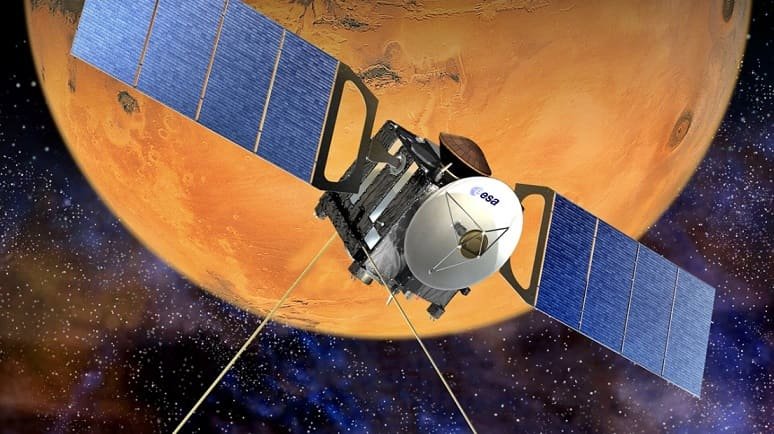
The European Space Agency successfully carried out the first-ever video live feed from Mars in what may be the future. The video transmission was sent from Europe's Mars Express, which was orbiting the Red Planet, and it arrived on Earth minutes later.
Every picture travelled approximately 300 million kilometres to Earth, nearly 17 minutes to do so, and another minute to pass via the ground stations. However, the deep space-relay antenna in Spain's inclement weather occasionally interfered with the signal.
The Visual Monitoring Camera (VMC) onboard Mars Express, which currently serves as the probe's webcam, took the pictures.
As the spacecraft circled Mars, the first pictures progressively became larger until they only showed roughly a third of the planet. In several of the images, it was easy to make out white clouds.
Mars Express has been circling the Red Planet for 20 years, and a video live feed was conducted to commemorate this significant milestone.
"Mars Express has outlasted, performed better than expected, and in fact beyond expectations. Mars Express has endured five times longer than it was intended to, making it quite elderly in human years, according to a statement from the European Space Agency.
According to Simon Wood, the mission's spacecraft operations engineer, when the spacecraft's antenna can be aimed in this direction, images and other data are often saved on board and then communicated to Earth. The agency cited recent live footage of spacecraft purposefully smashing into the moon and an asteroid, as well as the live transmissions of the Apollo moonwalkers more than 50 years ago.
The mission of the spacecraft, which was launched on June 2, 2003, was to research Mars' geology, temperature, and atmosphere in order to learn more about its past and potential to support life. The planet's water ice has been found both above and below the surface thanks to its radar sensor, MARSIS.
A lander named Beagle-2 that was part of the Mars Express mission to the red planet lost communication with Earth as it made an attempt to land there.
Beagle-2 was photographed by NASA's Mars Reconnaissance Orbiter more than ten years later. The lander reached the surface, but its solar panels didn't completely extend.
Comments